
The narrow-bridged musk turtle is a species of turtle in the family Kinosternidae. The species is found in Central America and Mexico.

The Gulf Coast spiny softshell turtle, a subspecies in the Trionychidae family of softshell turtles, is endemic to the south-eastern United States.

The Mexican box turtle is a species of box turtle belonging to the family Emydidae. It is sometimes treated as a subspecies of Terrapene carolina.
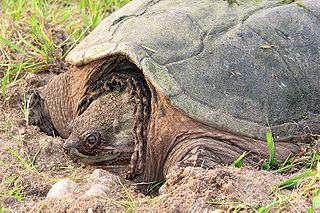
Chelydra is one of the two extant genera of the snapping turtle family, Chelydridae, the other being Macrochelys, the much larger alligator snapping turtle. The snapping turtles are native to the Americas, with Chelydra having three species, one in North America and two in Central America, one of which is also found in northwestern South America.
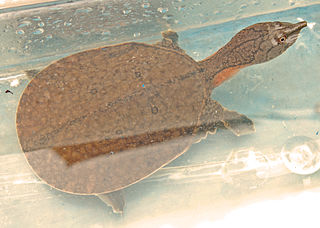
The Malayan softshell turtle is a species of softshell turtle in the family Trionychidae. It is monotypic in its genus.
The Namoi River snapping turtle, also commonly known as Bell's turtle, the Namoi River elseya, or Bell's saw-shelled turtle, is a species of turtle in the family Chelidae. The species is endemic to New South Wales, Australia.
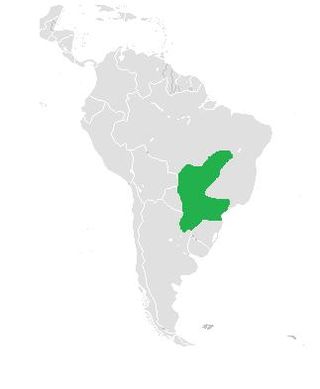
Vanderhaege's toad-headed turtle is a species of turtle in the family Chelidae. The species is endemic to South America.
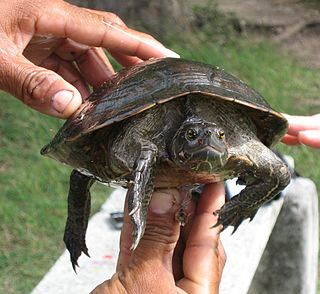
The Central Antillean slider is a species of turtle in the family Emydidae. The species is found on three islands in the West Indies: Hispaniola, Great Inagua, and Puerto Rico.

The peninsula cooter is a species of freshwater turtle in the genus Pseudemys. It is sometimes considered a subspecies of the coastal plain cooter when that turtle is not itself considered a subspecies of the river cooter.

The Iberian pond turtle, also known as the Mediterranean pond turtle or Mediterranean turtle, is a species of turtle in the family Geoemydidae. The species is endemic to southwestern Europe and northwestern Africa.

The Nicaraguan slider is a subspecies of turtle in the family Emydidae. The species is indigenous to Nicaragua and Costa Rica.

The Cuatro Ciénegas slider, also known commonly as la jicotea de Cuatrociénegas in Mexican Spanish, is a species of turtle belonging to the genus Trachemys of the family Emydidae. The species is native to northeastern Mexico.
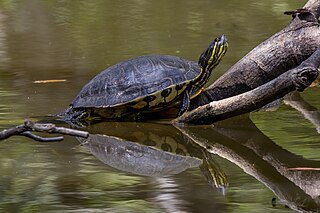
The Meso-American slider is a species of turtle belonging to the family Emydidae. The species is distributed from Mexico to Colombia.
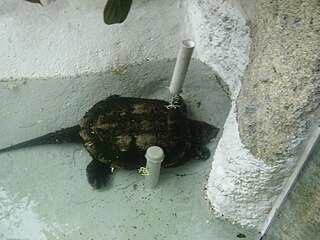
The South American snapping turtle is a species of turtle in the family Chelydridae. This species, which is endemic to Central and northwestern South America, was previously considered a subspecies of Chelydra serpentina. Its restricted range in South America reflects its recent arrival there as part of the Great American Interchange.

The western black-bridged leaf turtle is a species of Asian leaf turtle found in southern Indochina.

The eastern black-bridged leaf turtle is a species of Asian leaf turtles found in southern Indochina.

The Okavango mud turtle or Okavango terrapin) is a species of turtle in the family Pelomedusidae endemic to Africa. It is found in Angola, Botswana, the Democratic Republic of the Congo, Namibia (Caprivi), Zambia, and Zimbabwe.
The Central African mud turtle is a species of turtle in the family Pelomedusidae. The species is endemic to Central Africa.

The African forest turtle is a species of turtle in the family Pelomedusidae. It is endemic to Africa, where it can be found in Angola, Burundi, Cameroon, Equatorial Guinea, Gabon, the Democratic Republic of the Congo, the Republic of the Congo, Ghana, Tanzania, and Uganda
Pelusios marani, also known as the Gabon mud turtle, is a species of turtle in the family Pelomedusidae. This species is endemic to Africa.


















